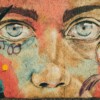The first post in this series pondered problematic modern Christian conceptions of truth, and the second pondered prescribed classic Christian practices of love, arguing for its priority. The focus in both was not on compelling truths about God, nor virtuous love of God or nature. Instead, the conundrum was what Christians believe to be true about persons, and how they hold it, compared to what Christians understand to be love of persons, and how they practice it. Comprehension of and compassion for the personhood of our students and neighbors is central to Christian calling.
Each person is a bio-psycho-social-spiritual being, a complex combination of physical, psychological, social, and spiritual realities. What is true about individuals physically, psychologically, and socially has been increasingly unpacked by the modern natural and social sciences over the past few centuries. What is true about persons spiritually has not so much been revealed recently, as continuously explored and elaborated by luminaries both scholarly and mystical throughout human history. Significantly, individuals have varying degrees of awareness of what is true about themselves and others, none have complete knowledge of themselves and others, and many lack important knowledge of themselves and others. Such lack of knowledge then not only limits the individual’s self-concept, but by routinely being projected onto others, compromises the individual’s ability to love others deeply.
Neurodiversity
For example, take the complicating physical-psychological truth of persons born with neurodiversity. Whereas neurotypical persons fall within the average range of neurocognition, neurodivergent persons fall somewhere on the spectrum of neurocognition. Some divergences, such as autism, have been classified as mental disorders despite the differences not necessarily being pathological.1 Indeed, differences are not necessarily deficits, some occasionally even functioning as “superpowers,” as Elon Musk exemplifies. Nevertheless, neurotypical persons frequently unlovingly deem neurodivergent persons as having a bad attitude, or not trying hard enough, when in fact their abnormal behavior is not a product of their negative mindset or lack of effort, but rather their sheer cognitive capacities. When oblivious to the truth about themselves, neurodivergent persons frequently judge themselves likewise. Yet both the neurotypical and the neurodivergent person have difficulty empathizing with the other—the double empathy problem2—the challenge, as always, being how not only to grasp the truth about self or the other, but also to love the self or other.
The established structure of higher education is obviously a particular challenge for neurodivergent students. Socially, they often struggle with loneliness, anxiety, and depression. Academically, they often struggle when their divergent learning styles are confronted with standardized assessment procedures, which fail to recognize their potentially particular giftedness.3 As the saying goes, if you judge a fish by its ability to climb a tree, it will spend its whole life believing it is stupid. Adopting a social model of diversity which examines how persons are treated by others, in contrast to a medical model which views the neurodivergent as pathological and needing to be cured, many universities have now implemented programs to facilitate their accessibility and support. Commendably, universities thereby recognize the truth of neurodivergence and practice respect for the neurodivergent person by providing focused interventions and accommodations for such students.
Racialization
The physical-social truth of persons born with physical features that have been categorized as racial and consequently demeaned is another example. First mapped by physical anthropologists who created the initial conceptual categories of Caucasoid, Negroid, and Mongoloid based on similarity of physical appearance, the very concept of race is now outdated and obsolete.4 Genetic variation within any one category of people is truly as great as variation between categories; in reality, the human species is another spectrum of physical characteristics in which three or three hundred categories could be drawn. Scientists have now concluded that there are no objective criteria in general, and there is no biological basis in particular for categories of race, and thus have turned to the concept of racialization, which is the political process of ascribing racial identity to persons. Race, they conclude, is a vacuous, false thing (noun), whereas racialization is a loaded, human process (verb) recurrent throughout history.
Obviously, racialization has a long, complex, and torturous history. And the indubitable reality of racism past and present is that it has committed some of the most horrific and still recent collective crimes of history, from slavery to genocide. Citing cases is unnecessary here, but during the Philippine-American war of 1899-1902, poet Rudyard Kipling famously exhorted Americans to colonize Filipinos because it was “The White Man’s Burden” (1899) to civilize “your new-caught, sullen peoples, half devil and half child.” Demonstrably, racism remains real at multiple levels today: the intra-personal level of internalized beliefs and feelings; the inter-personal level of prejudice (pre-judgment) shown between individuals; the institutional level of discriminatory policies and practises within social institutions; the systemic level of ongoing racial inequalities maintained by society. Notably, racism also remains rife in universities, from prejudicial attitudes to discriminatory actions, from interpersonal student microaggressions to professorial stereotyping of students to ethnocentric curricula to inequitable institutional funding, all of which is unloving. In sum, race is not a truth, and racialization and racism are not love.
Intersex Persons
A third example is the often more surprising reality of persons born with both male and female physical features. There are approximately thirty types of intersex persons located somewhere on this third physical spectrum. Some have various combinations of visible external genitalia, but some have XXY or XYY sex chromosomes, or a unique combination of testes and ovaries as gonads, or a mix of the WNT4 gene and the RSP01 gene that determine sexual organ development, all of which are externally invisible and probably never revealed to and known by the individual possessing them.5 Only one type (congenital adrenal hyperplasia) represents a physical medical emergency in a newborn, but despite their genital tissues being healthy, intersexuals are routinely stigmatized, pathologized, and subjected to medical intervention at great psycho-social cost to and tormenting psycho-social confusion of the person. Permitting no room for sexual ambiguity, a binary opposition of maleness and femaleness is imposed as much as possible via surgery and hormonal interventions.6
Lacking modern physiological evidence, anthropological accounts alone cannot document the percentages of intersex people cross-culturally. But it is likely that they are among the hijras of the Indian subcontinent, the kathoey of Southeast Asia, and the bissu of Indonesia who are considered a perfect combination of male and female with special spiritual powers, like the two-spirited Indigenous peoples of North America. Historically known as hermaphrodites in Euro-American societies, no attempts to alter them were made in the Greco-Roman world. Nor did Jesus belittle the three types of eunuchs he identifies (Matthew 19), the first being congenital and likely intersex, but he instead welcomed them into the service of the Kingdom, adding “let anyone accept this who can” (v.12). Indeed, going back to the beginning, it has been hypothesized that the first human created may have been intersexual. In Genesis 1:27, if taken literally, God created ha adam, the earthling, in his own image, not ish who later became the male when ishah, the female, was separated from him, thereby creating two poles of a continuum, not sexual dimorphism. Clearly, intersex bodies are then also temples of the Holy Spirit (1 Cor 6:19). As intersexual Catholic priest and scholar Sally Gross stated so simply, “I am a creature of God … and intersexed people are created, no less than anyone else, in the image and likeness of God.”7
Conclave is a multiple award-winning 2024 film based on a 2016 novel by Robert Harris about one fictitious instance of the factual sequestered process of Catholic cardinals electing the next pope. Spoiler alert: the narrative ends with Vincent Cardinal Benitez eventually being elected Pope Innocent XIV, and the shocking revelation after his election is that he is intersex. He then recounts his unawareness that he had a uterus and ovaries until his recent appendectomy, and after initially offering to resign from the priesthood and booking a laparoscopic hysterectomy, he reconsidered and chose to keep his female organs, stating “I am what God made me … I know what it is to exist between the world’s certainties.” The film ends with a live lost turtle being rescued from the marble Vatican floor and placed in a secure Vatican pool, intersex turtles having gonads that contain both male and female structures.
Neurodiversity, racialization, and intersexuality are physical truths of persons not yet fully understood. All their psychological, social, and spiritual realities are even less well understood, and imposing arbitrary categories on physical spectrums for the purpose of conceptual clarity is unhelpful. Granted, it is enormously difficult to avoid mentally assigning people into different groups, because doing so facilitates thinking by providing easy, ready-to-use, cognitive schemas of them. Indeed, every word is a category of thought. Nevertheless, categorization also lamentably facilitates unloving prejudice (pre-judgment), stereotyping, discrimination, and ultimately self-fulfilling prophecy.
Elevating Love
Sociologist Christian Smith articulated and rank-ordered thirty emergent capacities of persons in five ascending categories from rudimentary existence capacities to highest order capacities.8 Truth-seeking is listed in the category of highest order capacities, but interpersonal love is the highest capacity of all. Whether the truth about persons is clear and known to themselves or others, or not, all neurodiverse, racialized, and intersex persons have all human capacities, and must be loved as such. All Christians in academia are called to both intellectual humility in their truth-seeking and affective compassion in their loving. And when we do not know our students well enough personally to meaningfully love them, we can still show loving kindness to them as our humankind. The Dalai Lama got his priorities in good order when he shared that “I’d rather be kind than right. You can always be kind.”
In Micah 6:8, to love kindness is listed at the center of the three foundational requirements of God. In Galatians 5:22, kindness is listed at the center of the nine fruits of the Spirit. And while all people other than psychopaths and sociopaths are capable of kindness, Christians are commanded not merely to practice random acts of kindness, but to clothe themselves in kindness (Col 3:12). Metaphorically then, loving kindness should be what our students and neighbors constantly see first when they meet us in the classroom or in everyday life. And in truth, loving kindness may well be definitive of Christlikeness. God forbid that our scholarly “truths” about persons get in the way of loving them.
An earlier version of the first two blogs in this three-part series first appeared as an article in the Journal of Sociology and Christianity.
Footnotes
- Patrick Dwyer, “The Neurodiversity Approach(es): What Are They and What Do They Mean for Researchers?” Human Development 66(2) (2022): 73-92.
- Damian Milton, “On the Ontological Status of Autism: The ‘Double Empathy Problem’.” Disability & Society, 27(6) (2012): 883-887.
- Lynn Clouder, Mehmet Karakus, Alessia Cinotti, Maria Virginia Ferreyra, Genoveva Amador Fierros, and Patricia Rojo, “Neurodiversity in Higher Education: A Narrative Synthesis,” Higher Education 80(4) (2020): 757-778.
- Sheena Michele Mason, The Raceless Antiracist: Why Ending Race is the Future of Antiracism (Durham, NC: Pitchstone Publishing, 2024).
- Claire Ainsworth, “Sex Redefined,” Nature, 518 (2015): 288-291.
- Ibid.
- Val Hiebert, “From Stranger to Neighbor: Intersex Persons and the Church,” in Matthew S. Vos, Strangers and Scapegoats: Extending God’s Welcome to Those on the Margins (Grand Rapids, MI: Baker Academic, 2022).
- Christian Smith, What is a Person? Rethinking Humanity, Social Life, and the Moral Good from the Person Up (Chicago: University of Chicago Press, 2010).
























The author of this 3-part essay has given us much to consider when we attempt to speak the truth in love. What I find lacking in the essay is a clear definition of love, one that that would be as thorough as the discussion of truth in Part 1. The closest we get to a definition, it seems to me, is in Part II: “That means placing ourselves in their shoes, feeling their pain, and seeking their good as they would from their vantage point, just as we seek our own good from our own vantage point.”
If I’m understanding correctly, this means that love is seeking the good that the other perceives as their good (“from their vantage point”.) But of course if that’s true then the loving thing to do is to assist (or at least to not hinder) the other in the pursuit of their perceived good. But we can think of all kinds of scenarios where such assistance is exactly not a loving (or Christian) thing to do. Our perceived goods are not always what is best for us and it often takes another loving friend to point out our blindness when that happens.
Instead, if we define love as (empathetically) desiring and striving for what is truly the best for the other, then we would have to have a conversation about what is truly best. The answer to that question would have to look at least partially to issues of truth that transcend the desires of all involved.